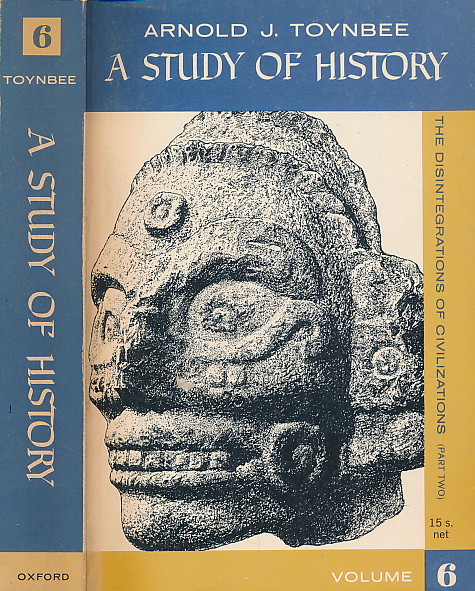A Study of History, Vol 5-6 : The Disintegrations of Civilizations (Part one and part two)
€50,00
Nema na zalihi
| Težina | 1731 g |
|---|---|
| Format | 14 × 20 cm |
| Autor | |
| Izdavač | |
| Godina | 1962 |
| Broj stranica | 1344 |
| Uvez | Meki |
| Stanje knjige | Vrlo dobro |
Volume 5 is the largest tome in the Toynbee series at 712 pages of fine print and even finer footnotes. Disintegration of civilizations is the theme of this volume and its first part is included here. Toynbee carries his theorization through the disintegration of civilizations till its dissolution in a two-part series covering volumes 5 and 6. The book commands careful study from its readers with its rich repertoire of references, incidents and long chain of sentences which won’t let a reader look sideways while embarking on his epic journey through the narrative. But the sense of achievement and fulfilment that awaits him when the last page is turned is worth the effort. Just like the mere birth of a civilization does not guarantee its growth, the breakdown of a civilization does not automatically relate to its disintegration and dissolution. While growth is achieved by the successful response to a challenge managed by the creative minority, disintegration sets in when the minority fails to come up with an effective response to a challenge. The minority then loses its creativity and thereby forefeits its privilege to act as the role model for the unthinking majority to mimic its newly managed feat. At this juncture, the creative minority turns into a dominant minority that forces the majority to toe its line through force. This group rides piggyback as an incubus on the society. New minorities may carry the baton at this point and may come up with a stimulating response to the challenge that proved insurmountable to the former. In such a case, the society continues its growth. In short, the growth phase of a civilization consists of several challenges and successful responses, while the disintegration phase is dominated by a single insuperable challenge that taxes the imagination and creativity of the society. It is then amenable to physical as well as spiritual aggression from outsiders and insiders alike. It is also likely that the disintegrating society may turn its arms towards its neighbours to bring about an expanded empire. Though it may seem counterintuitive, the spread of a society denotes its disintegrative phase. The internal proletariat (the word means only a group of people in, but not out of, the society and its elders) provides a unique spiritual pathway to the beleaguered people in the form of a universal church. Christianity provided such a church to the Hellenic Civilization, exactly like Islam to the Syriac and Hinduism to the Indic. Toynbee completes another episode of his legendary course of analyzing history in this sixth volume by making a thorough analysis of disintegration of societies that completes the theme started with the previous volume. Curious it may seem, but the challenges and responses faced by a growing society are numerous, but that of a disintegrating society is the same, in which the hapless constituents go about repeating or varying a response that is proving out and out ineffective. In this sorry state of affairs, epic figures arise with promises of change and transformation. The nature and scope of these new paths are studied and analysed in this volume. Though heavily coloured with a partisanship to Christianity and its philosophy, the book provides a deep understanding of the peculiar juncture in history when a higher religion spouts from a mixture of creativity and despair.
